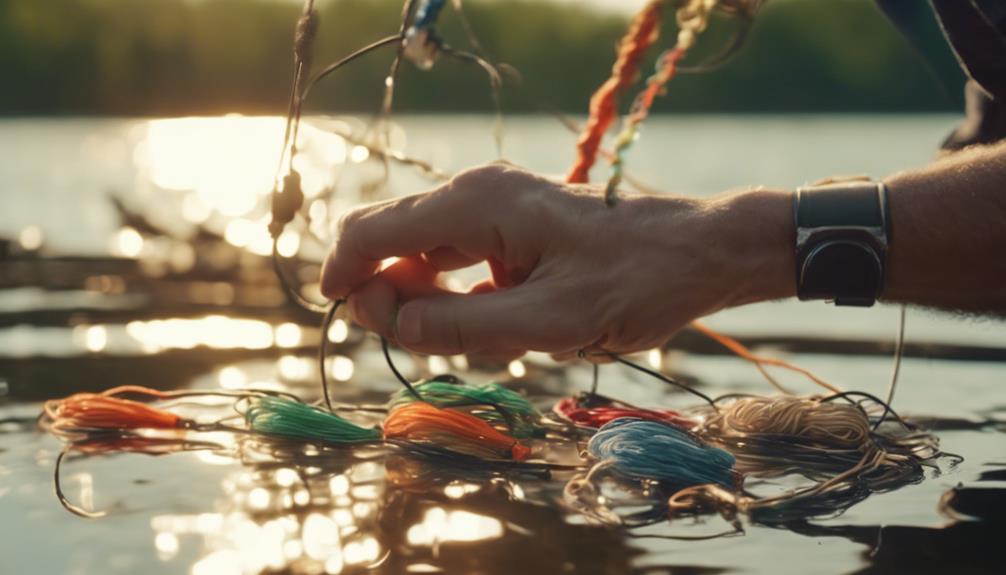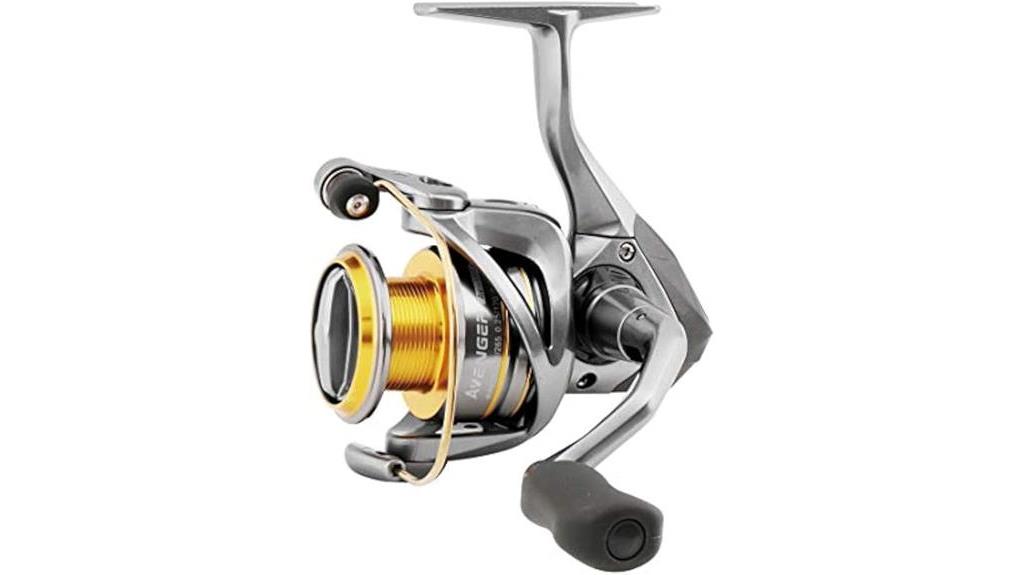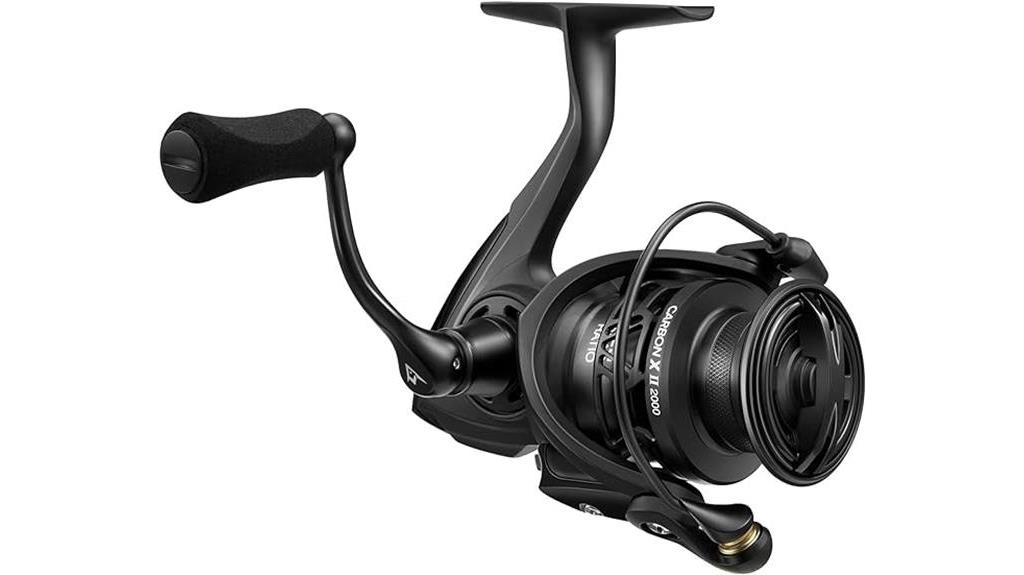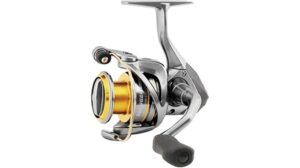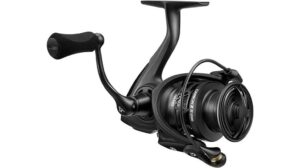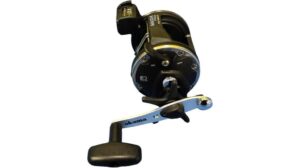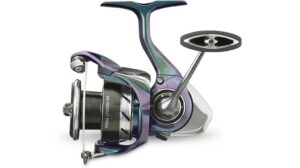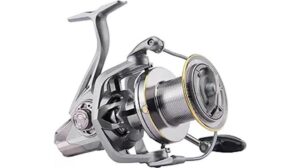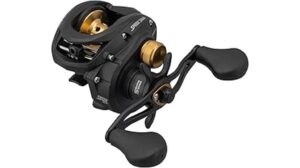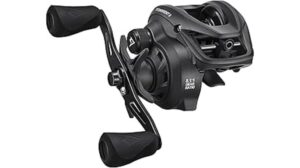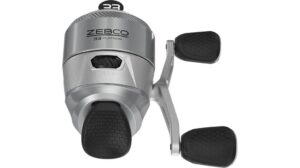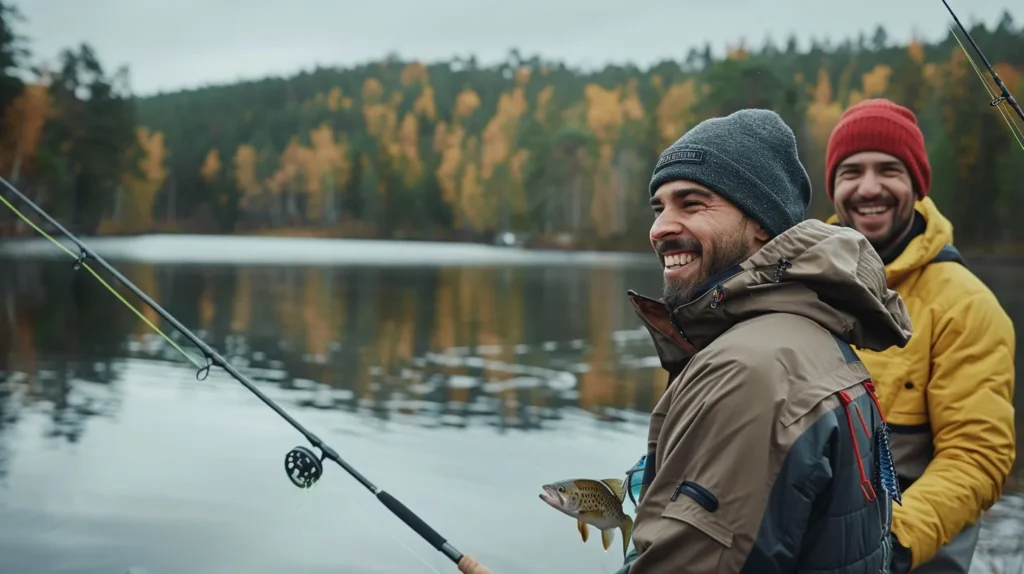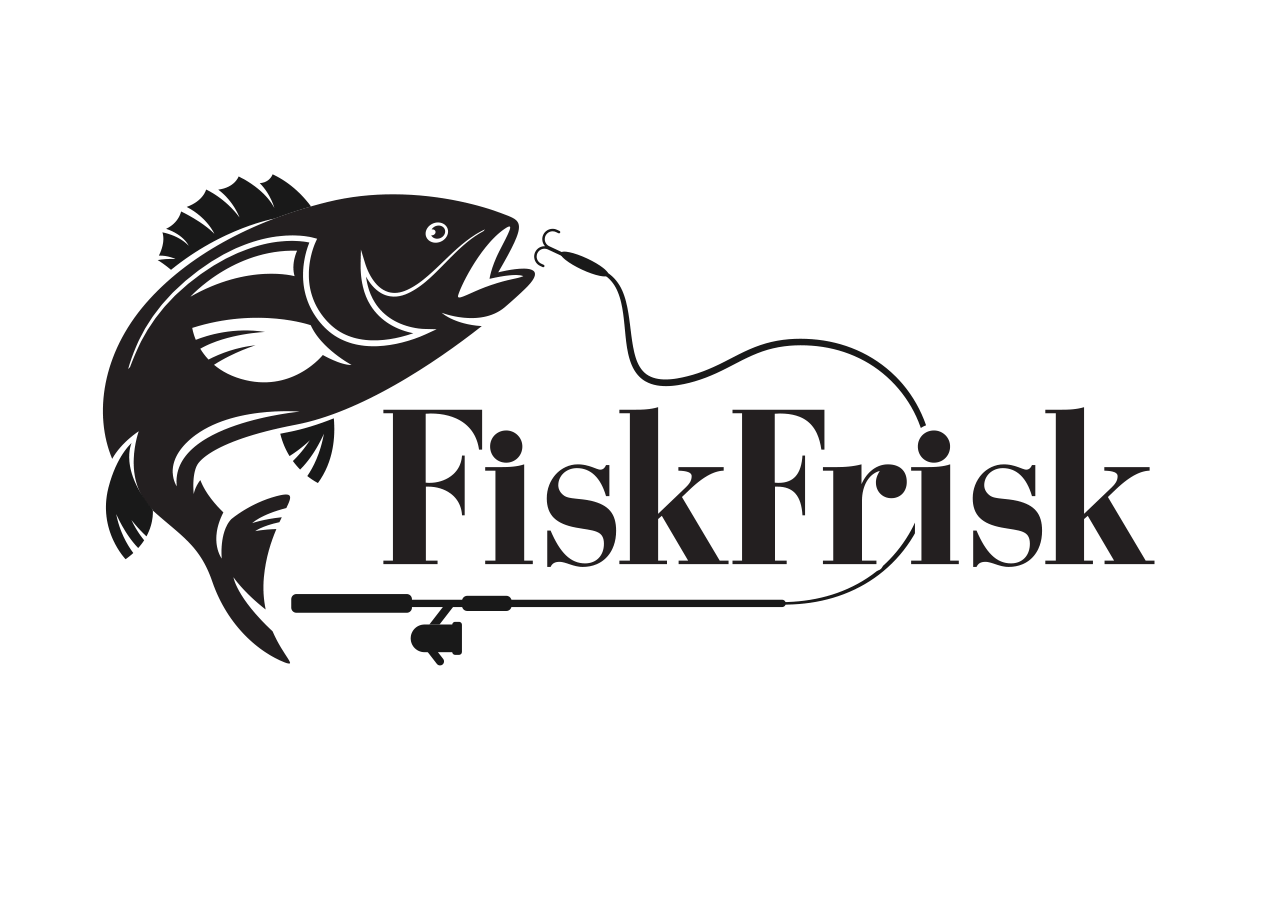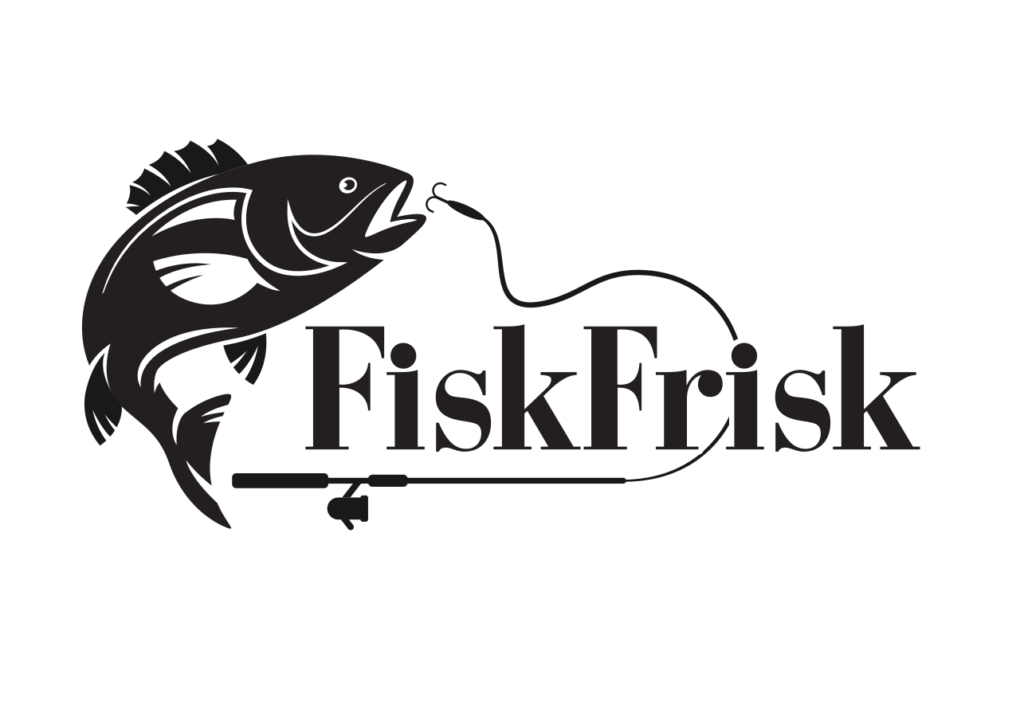We've identified six essential fishing knots that every angler should master: the Palomar, Improved Clinch, Uni, Blood, and Snell knots. These knots are vital for successful angling, ensuring line strength and enhancing the chances of landing trophy fish. Each knot serves a specific purpose, from attaching hooks and lures to joining lines. The Palomar knot, for instance, is known for its remarkable strength and simplicity, while the Blood knot is important for creating leader-to-tippet connections. By dedicating time to practice these knots, anglers can greatly improve their fishing success. Let's explore each knot in detail to enhance your fishing skills.
The Importance of Knot Mastery
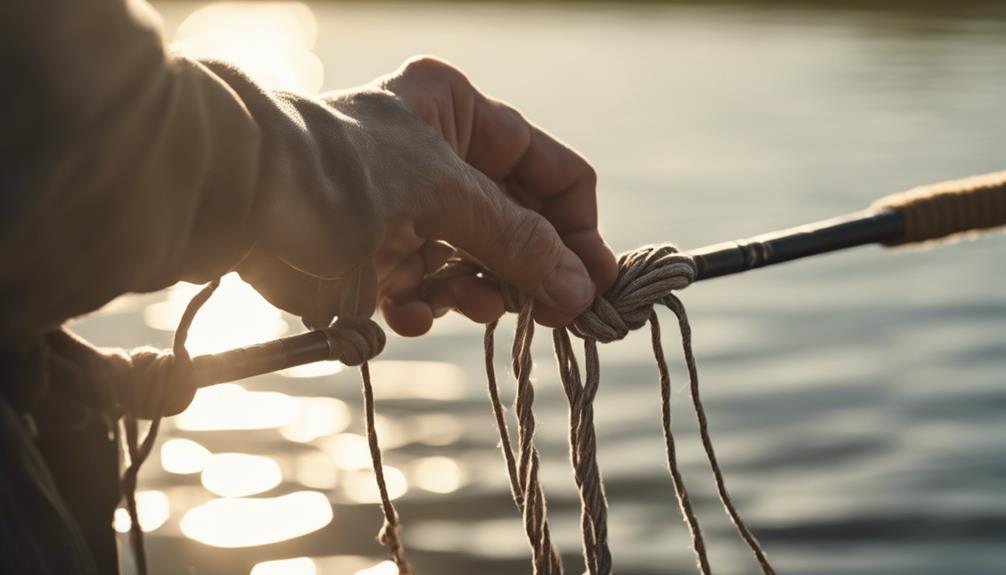
Mastering fishing knots is the cornerstone of successful angling, separating novices from seasoned pros. We can't overstate the importance of this skill. A well-tied knot guarantees our line holds strong, even when battling feisty catches. It's the difference between landing that trophy fish and watching it swim away. Let's plunge into the world of knots together, enhancing our connection to the art of fishing.
Palomar Knot
Among the essential knots in an angler's arsenal, the Palomar knot stands out for its remarkable strength and simplicity. We love this knot for its versatility, as it's perfect for attaching hooks, lures, and swivels to our line. The Palomar's unique design creates a double line through the eye, resulting in a knot that maintains nearly 100% of the line's original strength. It's our go-to for both monofilament and braided lines.
Improved Clinch Knot
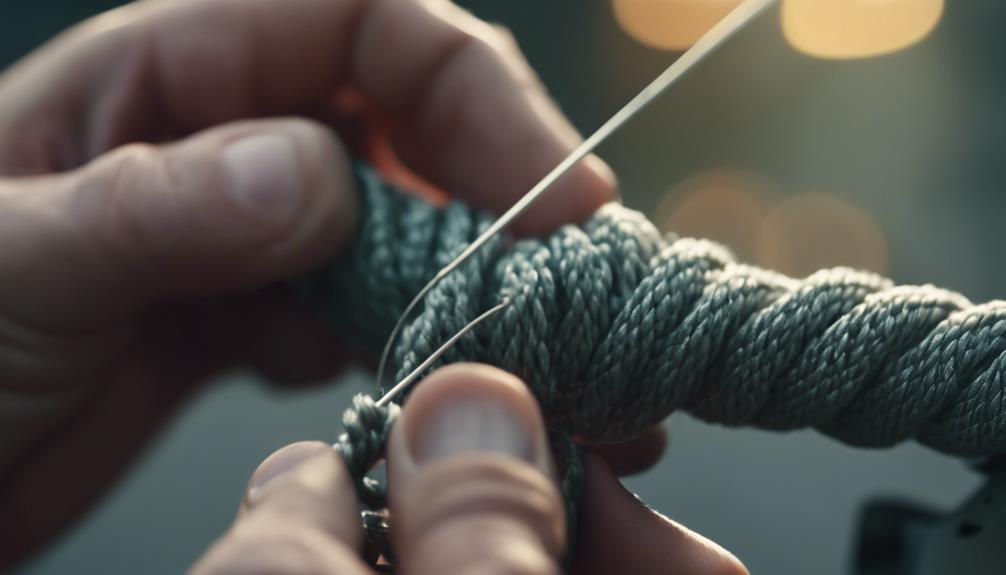
While the Palomar knot excels in many situations, the Improved Clinch knot is another stalwart in our fishing repertoire, offering reliability and ease of use for a wide range of fishing applications. We love this knot for its versatility and strength. Here's why it's a favorite:
- Ideal for attaching lures and hooks to monofilament
- Maintains up to 95% of the line's original strength
Uni Knot
The Uni Knot stands out as a versatile and reliable option that's earned its place in every angler's arsenal. We love its simplicity and strength, making it perfect for attaching line to hooks, lures, or swivels. Let's walk through tying this knot together: thread the line through the eye, double back, and create five to seven wraps around the standing line. Slowly tighten, and you're ready to cast!
Blood Knot
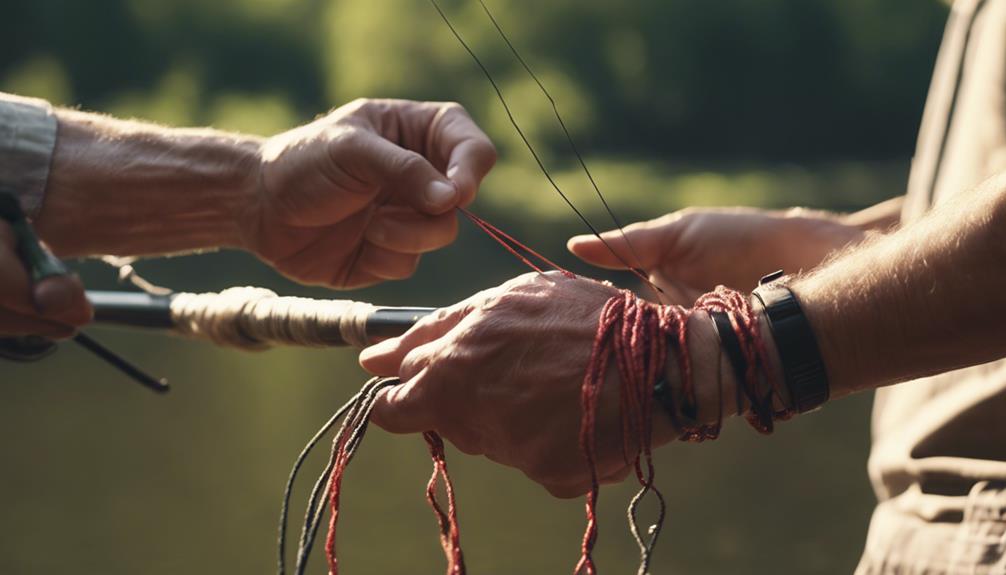
Every angler should master the Blood Knot, as it's one of the most reliable methods for joining two lengths of fishing line together. We've found it particularly useful for:
- Creating leader-to-tippet connections
- Extending fishing line length
Let's practice tying this knot often, as it's tricky but essential. We'll need patience and dexterity, but once mastered, it'll become second nature, enhancing our fishing experience and success rates.
Snell Knot
Moving from connecting lines to securing hooks, we'll now explore the Snell Knot, a technique that's been around for centuries and remains a favorite among bait fishermen. This knot is particularly effective for attaching hooks with an eye that's in line with the shank. By passing the line through the eye and wrapping it around the shank, we create a strong connection that maintains the hook's natural alignment with the line.
Practicing and Perfecting Your Technique
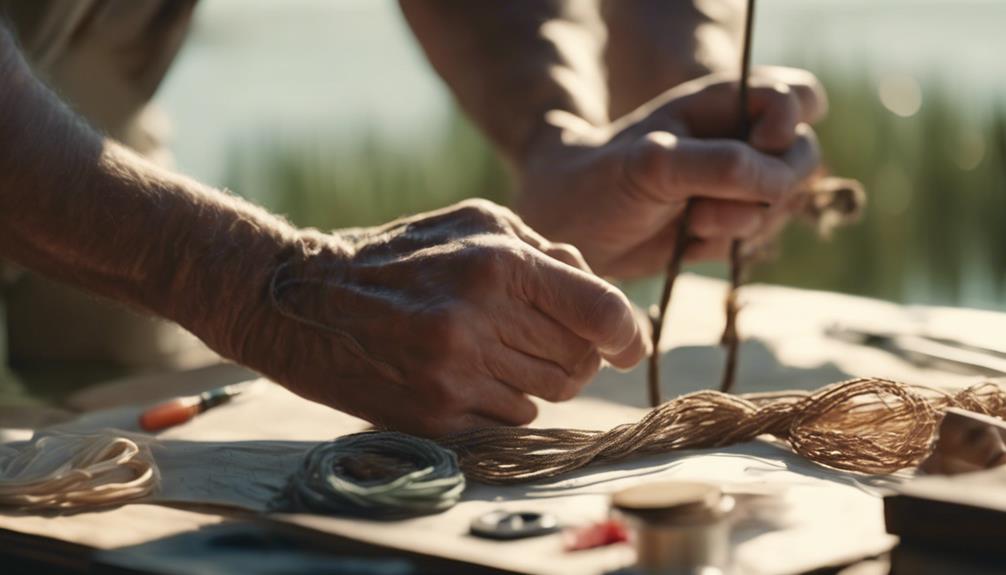
To master fishing knots, we'll need to dedicate time and effort to practice, as repetition is key to developing muscle memory and improving our technique. Let's focus on these essential steps:
- Start with dry line and practice tying knots slowly
- Gradually increase speed while maintaining accuracy
Conclusion
We've covered the essential fishing knots that'll enhance your angling success. By mastering these techniques, we're not just tying lines; we're connecting ourselves to a rich tradition of fishermen before us. As we practice and refine our knot-tying skills, we're increasing our chances of landing that trophy catch. Remember, it's not just about strength; it's about selecting the right knot for each situation. Let's keep learning, adapting, and sharing our knowledge to elevate our collective fishing experiences.
